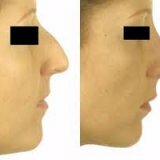The risks of plastic surgery

Any surgical intervention, complex or simple, involves a certain degree of risk. And although in some cases the risk is small, however, the patient must be aware of the existing risk.
The risks of plastic surgery are minimal, especially if the patient is healthy, respects all pre-operative prescriptions and the operation is performed in a well-equipped hospital by qualified plastic surgeons. The risk of complications after surgery increases if the patient suffers from diabetes, cardiovascular disease or an inveterate smoker. But this does not mean that such patients can not be operated on. Operations can be done, but only after careful preoperative preparation.
Potential problems
General anesthesia. Anesthesia allows the patient to enter a state of medical sleep, so that during the operation he does not feel painful sensations. This type of anesthesia is used in some rhinoplasty, liposuction, and other types of plastic surgery.
Side effects of general anesthesia: allergic reaction, formation of thromboses, brain damage, stroke, myocardial infarction, peripheral nerve damage. Some complications are dangerous for the patient's life.
Infections. During the plastic surgery, infection is almost impossible, because in the operating room there are sterile conditions. But still there are cases of infection and then the risk of complications depends entirely on the duration of the operation.
Venous thrombosis. If a blood clot forms in the blood vessels, this not only increases the risk of complications, but can even lead to death. The longer the operation lasts, the higher the probability of thrombosis. In addition, the risk of venous thrombosis in the lower extremities increases if the patient does not move or is obese after the operation. If the thrombus ruptures, then, along with the blood flow, it will enter the pulmonary artery and cause a life-threatening complication - pulmonary embolism. To prevent this, anticoagulants are prescribed - drugs that reduce blood coagulability. Sometimes, after liposuction on the hips, it takes some time to wear a special compression belt.
Reduction of blood pressure. If blood pressure drops during surgery, this is normal. But a strong drop in pressure leads to myocardial infarction or arrhythmia.
Divergence of seams. If the patient has seams, this will cause internal bleeding or the formation of a hernia. In this case, a repeated operation is usually performed, which will help to correct the situation.
The main threats to plastic surgery
- Correction of one zone of the body will necessarily lead to changes in the other.
- Your relationship with a loved one can deteriorate. After all, not every man can get used to the fact that a beloved woman has changed her appearance. And some even regard this step as a desire to love other men like.
- Discussions at work. The team at work will notice that you have changed your appearance and will probably start discussing an enlarged chest or a corrected nose. Sometimes gossip is quite tough and unpleasant.
- The most common risk is the disappointment in the results of a plastic surgery.
- Dysmorphophobia is a mental disorder that leads to excessive concern about a small defect in the appearance. Before the operation, the patient is warned that the risk of dysmorphophobia after surgery can increase significantly.
- Against the background of dysmorphophobia and frustration, depression can develop.
- Physiological complications. Most patients to such operations are referred to as going to a regular beauty salon, however, plastic surgery is a heavy stress for the patient's body.
- Financial difficulties. To make an operation, some people take a loan from the bank. Some even grab for a plastic surgery, as a thread of hope, because they believe that a new appearance can change life for the better.
- A bad example for children.
- Psychological dependence.


